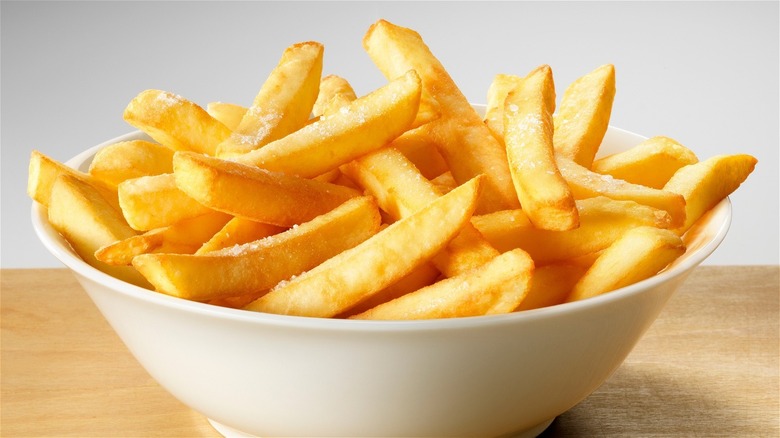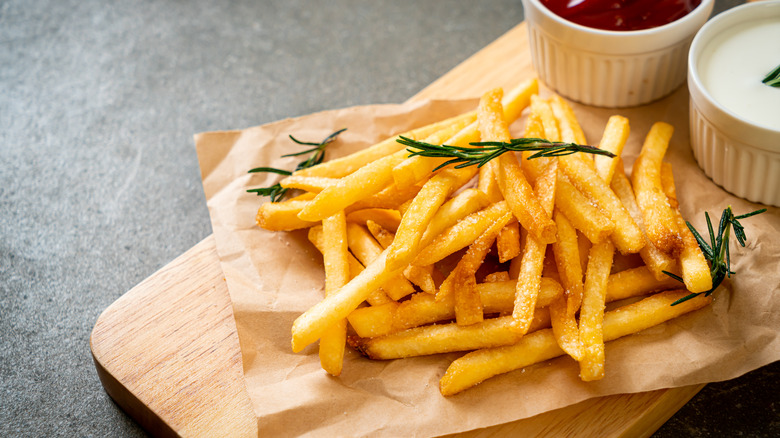The Reason French Fries Are Yellow, According To Science
Scientific fact number one: Potatoes are terrible conductors of heat. Scientific fact number two: That isn't true of the surface of a peeled potato which, when immersed in boiling oil, gets hot fast and quickly develops a golden seared crust. Scientific fact number three: The end product smells tantalizingly delicious.
Okay, that third point is not scientific, nor can someone detect a smell known as "delicious." For those of us who swoon at the aroma of a fresh batch of french fries, it's hard to describe it any other way. However, developing their signature color and crust is a scientific process that takes more precision than you might think. The process starts when the inside of the potato hits 136 degrees Fahrenheit and begins to soften. The exterior will get hotter more quickly, forming the crust around 212 degrees Fahrenheit as it interacts with the oxidized oil to generate molecules that ignite the Maillard Reaction.
The Maillard reaction is the key for foodies who love that crisp sear on everything from nicely tanned toast to perfectly seared steak. This reaction, which typically starts around 285 degrees Fahrenheit, can be considered the breaking point where the basic components of your ingredients — sugars and the amino acids in proteins — first break down and begin to reconfigure with a nice resulting char on the surface of your food. However, in the case of french fries, all golden hues are not equal.
The USDA named an official color chart for perfect french fries
Americans take their french fries so seriously that the USDA introduced a set of standards in 1966 for grading their color quality. The Munsell USDA French Fry Color Chart ranges from extra light to dark, with five gradations in between. The chart is meant to help set deep fryers for a programmed temperature and duration to crank out consistently-hued batches of french fries.
Consistent color is nice, but that toasted yellow crust isn't just beautiful. The Maillard reaction also changes the flavor and textural notes of a food. That is why french fries present a new flavor with more dimension than potatoes served another way. Paying such close attention to the science that delivers a uniform outer surface to the perfect french fry seems reasonable when you consider the unbelievable amount of french fries Americans eat every year (almost 30 pounds per person).
We can thank the Maillard reaction for beautiful french fries, though whether we salute Belgium or France for inventing them is another matter. The BBC reports that the jury is still out on whether a French-speaking Belgian's fried potatoes earned french fries their mainstream popularity or the street food (pommes Pont-Neuf) the French say started the trend. Given the mouth-watering aroma when facing a pile of perfect, golden french fries, in this case, we might have to say knowing the science trumps knowing the history.

